Jean Jansem - Original Etching Title: Saint Dimensions: 40 x 30 cm Edition of 175 Paper: vélin de Rives 1974 Jean Jansem was born in 1920 at Seuleuze in Asia Minor and spent his early childhood in Salonika. When he was twelve years old his family settled in Paris. As a schoolboy he liked to copy reproductions of ancient sculptures, then following an accident in which he broke the bones of his foot, he spent three years in hospital. Thus, at an age when most children were playing, Jansem came to know the meaning of solitude. This long period of physical inactivity accustomed him to long periods of reflection and meditation, and from this came the gravity that has always characterized him. Although the early chapters of his artistic life were difficult, in fact up to the war his most lucrative work was in the decorative arts - producing designs for fabrics and designing furniture, he never lost sight of his real passion, namely painting. From 1934 – 1936 he attended a variety of evening classes in Montparnasse and the Marais. He met fellow Armenian teacher, Ariel, who taught him to draw, but it was in the works of Picasso that he found his grand revelation. Before he was sixteen he had been admitted to the Ecole des Arts Decoratifs (1936 - 1938) where Beianchon, Leguelt and Oudet exercised a silent and unobtrusive influence on the young artist. During 1937 he completed a training course at the Beaux-Arts and at Atelier Sabatier. In 1950 he went to Greece and it was in the Mediterranean that he discovered light, until then his painting had been sombre. Throughout the Greek countryside he eagerly sketched the shadowy figures who had surrounded him in his infancy and who until then had remained hidden in his subconscious mind - peasants, fishermen, tradesmen. All these he submitted to his friendly scrutiny, these men, women and children whose work was the same from one ocean to another and from one continent to another. He stripped them of the accessories that particular societies might have added to their essential, changeless characteristics. Then followed a period of activity in which he won many awards, in 1951 the Prix Populiste, 1953 the Prix Antral, 1954 the Bourse Natioale, in 1958 Prix Comparaison in Mexico. In 1959 he participated in the Biennale de Bruges. He is a member of the Salon d'Automne and has participated in: Salons des Independents, Salon des Tuileries, Salon d'Art Sacre, Salon de l,'Ecole de Paris, Salon des Peintres temoins de leur temps. He has exhibited in Salon d'Atitimne, Salon de Comparaison, Salon du Dessin and Salon de la Peinture a 1'eau. His paintings appear in Museums at Ville de Paris, Ennery de Paris, Poitiers and several Art Museums in the U.S.A.
Jean Jansem - Acquaforte originale Titolo: Santo Dimensioni: 40 x 30 cm Edizione di 175 Carta: vélin de Rives 1974 Jean Jansem è nato nel 1920 a Seuleuze in Asia Minore e ha trascorso la sua prima infanzia a Salonicco. Quando aveva dodici anni la sua famiglia si stabilì a Parigi. Da scolaro gli piaceva copiare riproduzioni di sculture antiche, poi in seguito ad un incidente in cui si ruppe le ossa del piede, passò tre anni in ospedale. Così, in un'età in cui la maggior parte dei bambini giocava, Jansem ha conosciuto il significato della solitudine. Questo lungo periodo di inattività fisica lo abituò a lunghi periodi di riflessione e meditazione, e da questo nacque la gravità che lo ha sempre caratterizzato. Anche se i primi capitoli della sua vita artistica furono difficili, infatti fino alla guerra il suo lavoro più redditizio fu nelle arti decorative - producendo disegni per tessuti e progettando mobili, non perse mai di vista la sua vera passione, cioè la pittura. Dal 1934 al 1936 frequentò diversi corsi serali a Montparnasse e nel Marais. Incontra il suo compagno Ariel, insegnante armeno, che gli insegna a disegnare, ma è nelle opere di Picasso che trova la sua grande rivelazione. Prima dei sedici anni è ammesso all'Ecole des Arts Decoratifs (1936 - 1938) dove Beianchon, Leguelt e Oudet esercitano un'influenza silenziosa e discreta sul giovane artista. Durante il 1937 compie una formazione alle Beaux-Arts e all'Atelier Sabatier. Nel 1950 si reca in Grecia ed è nel Mediterraneo che scopre la luce, fino ad allora la sua pittura era stata cupa. Per tutta la campagna greca abbozzò avidamente le figure in ombra che lo avevano circondato nella sua infanzia e che fino ad allora erano rimaste nascoste nel suo subconscio: contadini, pescatori, commercianti. Tutti questi sono stati sottoposti al suo amichevole esame, questi uomini, donne e bambini il cui lavoro era lo stesso da un oceano all'altro e da un continente all'altro. Li spogliò degli accessori che società particolari avrebbero potuto aggiungere alle loro caratteristiche essenziali e immutabili. Seguì un periodo di attività in cui vinse molti premi, nel 1951 il Prix Populiste, nel 1953 il Prix Antral, nel 1954 la Bourse Natioale, nel 1958 il Prix Comparaison in Messico. Nel 1959 partecipa alla Biennale di Bruges. È membro del Salon d'Automne e ha partecipato a: Salons des Independents, Salon des Tuileries, Salon d'Art Sacre, Salon de l,'Ecole de Paris, Salon des Peintres temoins de leur temps. Ha esposto al Salon d'Atitimne, Salon de Comparaison, Salon du Dessin e Salon de la Peinture a 1'eau. I suoi dipinti sono presenti nei musei della Ville de Paris, Ennery de Paris, Poitiers e in diversi musei d'arte negli Stati Uniti.

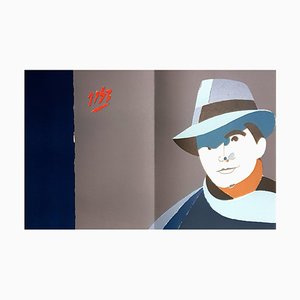
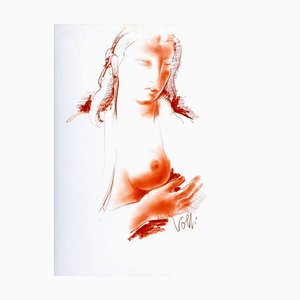
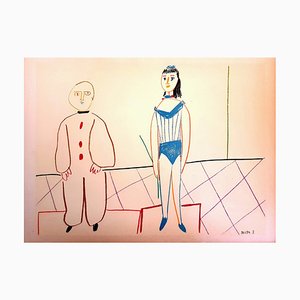
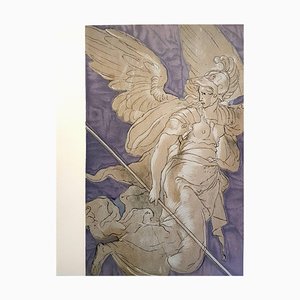
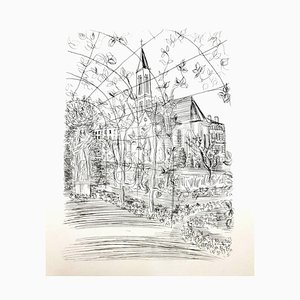

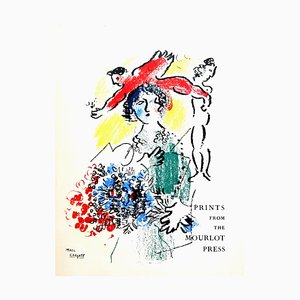
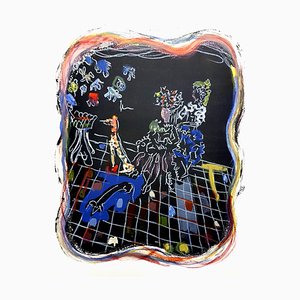
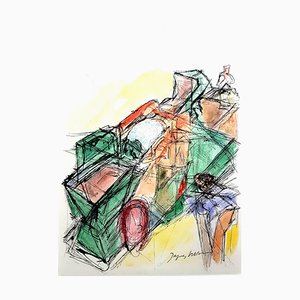
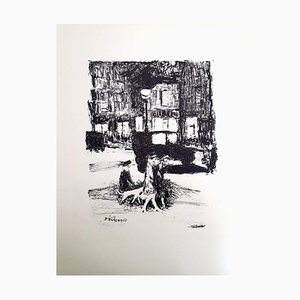
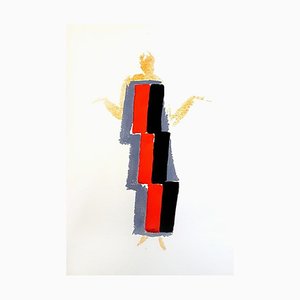
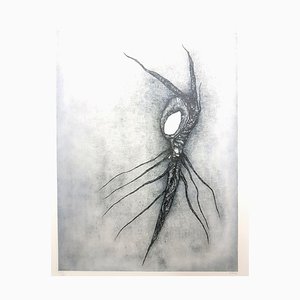

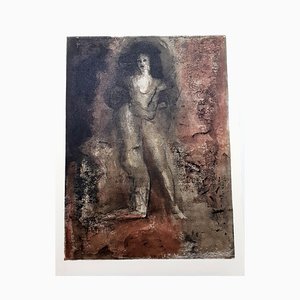
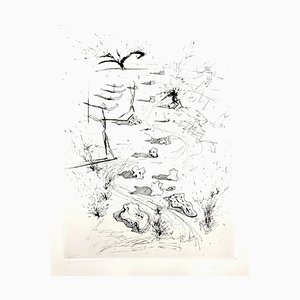
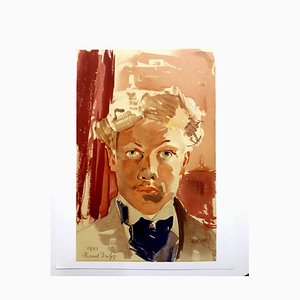
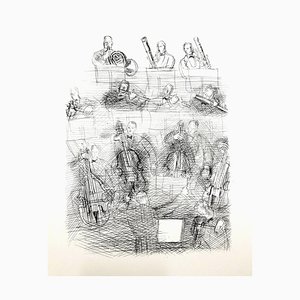
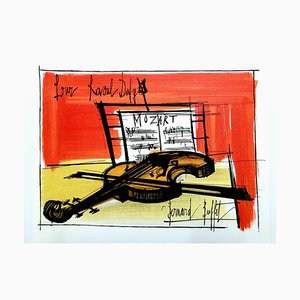
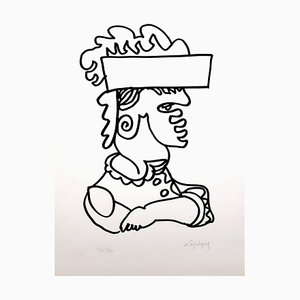
Contattaci
Fai un'offerta
Abbiamo notato che sei nuovo su Pamono!
Accetta i Termini e condizioni e l'Informativa sulla privacy
Contattaci
Fai un'offerta
Ci siamo quasi!
Per seguire la conversazione sulla piattaforma, si prega di completare la registrazione. Per procedere con la tua offerta sulla piattaforma, ti preghiamo di completare la registrazione.Successo
Grazie per la vostra richiesta, qualcuno del nostro team vi contatterà a breve.
Se sei un professionista del design, fai domanda qui per i vantaggi del Programma Commerciale di Pamono